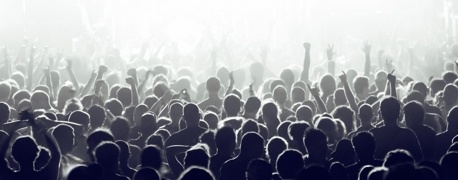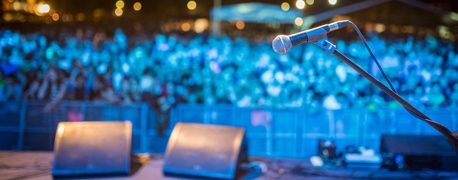What Is Rage Culture? The Rules of Mosh Pits

The next time you buy tickets to a concert or music festival, you may hear terms like “rage culture” and “mosh pit” thrown around, and if you don’t know what these mean, they can be intimidating. However, if the event organizers provide a little education and a lot of preparation and planning, moshing at a concert or festival can be fun and, more importantly, safe.
It is important for every attendee who wants to join the mosh pit to understand its rules. However, it’s the sole responsibility of the event promoters, security, and performers to enforce those rules and make sure the venue is large enough for the crowd and safely managed so that everyone can have a good time and go home at the end of the day.
“I think the draw of moshing…you share that excitement if everybody likes the artist,” says Paul Wertheimer, a crowd safety expert. “So it’s a communal experience—it’s physical, it’s consensual physical contact.”
As Wertheimer suggests, mosh pits are meant to be fun, and everyone who participates has the right to be safe regardless of how intense it can get. To make sure this happens, there are rules for moshers to follow. It’s up to the performers and event organizers to enforce those rules throughout the event.
What Are the Rules of Moshing?
To those unfamiliar with mosh pits, they may seem like excessive places where anything goes. While it’s true that moshing can be an intense activity, the fact is there are socially accepted rules that help keep everyone safe. In the end, mosh pit etiquette can be summarized in one way: take care of each other.
- Treat others as you wish to be treated.
- If you’re in the mosh pit, mosh—or look for a way out. If you’re not in the mosh pit, don’t mosh.
- If someone falls down, help pick them up.
- Moshing is an opt-in activity.
“The main thing is don’t make anyone feel uncomfortable and be sensitive to when people might feel uncomfortable and help them out when they look for help,” says Rhett McLaren, UNIFY Gathering organizer.
When done right—overseen effectively by trained security and supported with enough professional medical personnel—concerts and festivals with mosh pits can be exhilarating. When they’re not, they can be dangerous, and even turn deadly. That’s what happened at the 2021 Astroworld festival in Houston, when a crowd surge at Travis Scott’s Friday night performance killed 10 and injured hundreds more. This was not the first time a Travis Scott concert, or a Live Nation event, had turned violent.
Poorly Planned Events Can Be Dangerous
Several performers, such as Travis Scott, have formed their musical personality around the concept of rage culture. To help prepare everyone to have a good time at their concert (after all, that’s the whole point!), these artists must educate their fans about how to rage and mosh safely, plan their event with safety in mind, and put procedures in place to help manage the crowd.
Travis Scott has a history of perpetuating the negative aspects of what’s called “rage culture,” which has become a defining characteristic of his outward identity. This even extends to inciting violence at his shows. By adopting the aesthetics of rage culture without the focus on safety, performers like Scott put their fans in danger.
Event Promoters Are Responsible for Crowd Safety
To help prevent dangerous crowd surges like the mass casualty event that occurred at Astroworld, laws are enacted; in fact, many laws have been created in response to concert disasters. These laws are passed for one main reason: to keep concertgoers safe. Festival promoters should be held accountable for their actions (or inaction) when those laws are broken, and our concert injury lawyers are committed to finding justice for their victims. No matter what.


